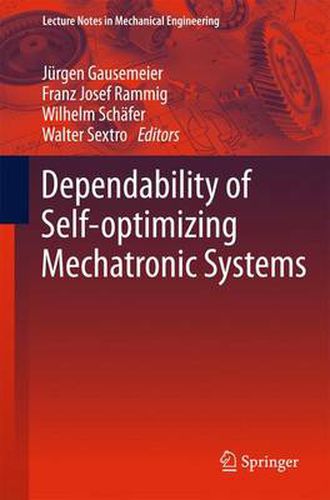Readings Newsletter
Become a Readings Member to make your shopping experience even easier.
Sign in or sign up for free!
You’re not far away from qualifying for FREE standard shipping within Australia
You’ve qualified for FREE standard shipping within Australia
The cart is loading…






This title is printed to order. This book may have been self-published. If so, we cannot guarantee the quality of the content. In the main most books will have gone through the editing process however some may not. We therefore suggest that you be aware of this before ordering this book. If in doubt check either the author or publisher’s details as we are unable to accept any returns unless they are faulty. Please contact us if you have any questions.
Intelligent technical systems, which combine mechanical, electrical and software engineering with methods from control engineering and advanced mathematics, go far beyond the state of the art in mechatronics and open up fascinating perspectives. Among these systems are so-called self-optimizing systems, which are able to adapt their behavior autonomously and flexibly to changing operating conditions. The Collaborative Research Center 614 Self-optimizing concepts and structures in mechanical engineering pursued the long-term aim to enable others to develop dependable self-optimizing systems. Assuring their dependability poses new challenges. However, self-optimization also offers the possibility to adapt the system’s behavior to improve dependability during operation.
The aim of this book is to provide methods and techniques to master the challenges and to exploit the possibilities given by self-optimization. The reader will be able to develop self-optimizing systems that fulfill and surpass today’s dependability requirements easily.
This book is directed to researchers and practitioners alike. It gives a brief introduction to the holistic development approach for self-optimizing mechatronic systems and the steps required to assure a dependable product design starting with the very early conceptual design phase. A guideline to select suitable methods for each step and the methods themselves are included. Each method is individually introduced, many examples and full references are given.
$9.00 standard shipping within Australia
FREE standard shipping within Australia for orders over $100.00
Express & International shipping calculated at checkout
This title is printed to order. This book may have been self-published. If so, we cannot guarantee the quality of the content. In the main most books will have gone through the editing process however some may not. We therefore suggest that you be aware of this before ordering this book. If in doubt check either the author or publisher’s details as we are unable to accept any returns unless they are faulty. Please contact us if you have any questions.
Intelligent technical systems, which combine mechanical, electrical and software engineering with methods from control engineering and advanced mathematics, go far beyond the state of the art in mechatronics and open up fascinating perspectives. Among these systems are so-called self-optimizing systems, which are able to adapt their behavior autonomously and flexibly to changing operating conditions. The Collaborative Research Center 614 Self-optimizing concepts and structures in mechanical engineering pursued the long-term aim to enable others to develop dependable self-optimizing systems. Assuring their dependability poses new challenges. However, self-optimization also offers the possibility to adapt the system’s behavior to improve dependability during operation.
The aim of this book is to provide methods and techniques to master the challenges and to exploit the possibilities given by self-optimization. The reader will be able to develop self-optimizing systems that fulfill and surpass today’s dependability requirements easily.
This book is directed to researchers and practitioners alike. It gives a brief introduction to the holistic development approach for self-optimizing mechatronic systems and the steps required to assure a dependable product design starting with the very early conceptual design phase. A guideline to select suitable methods for each step and the methods themselves are included. Each method is individually introduced, many examples and full references are given.